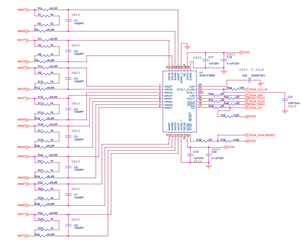Other Parts Discussed in Thread: ADS131M04, ADS131M03
Hi,
Right now, I'm using ADS131M08 for new design. Load cell direct connect to our ADC. I have noise level is high without connecting load cell. how to reduce the input noise level.
Input resistance is 49.9 ohm and common mode capacitor is 1000PF.



